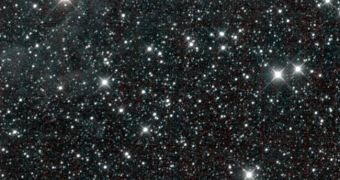After processing more than 15 trillion bytes of data, astronomers at the American space agency were finally able to compile an atlas and catalog of the entire infrared sky. Released on March 14, the dataset features more than 18,000 individual images.
NASA experts say that the catalog part of the dataset covers around 560 million objects found in those images. In total, the Wide-field Infrared Survey Explorer (WISE) telescope was able to snap more than 2.7 million images, in four infrared wavelengths.
During its primary mission, the spacecraft was able to image everything from near-Earth asteroids and other objects in our solar system to extremely distant galaxies, whose light was severely redshifted by the huge distances it traveled to get here.
The new catalog and atlas finally enabled mission planners to declare that the fundamental objective of the WISE mission was reached. The data were released following the publication of a preliminary report – covering only half of the night sky – in April 2011.
“Today, WISE delivers the fruit of 14 years of effort to the astronomical community,” University of California in Los Angeles (UCLA) professor and WISE principal investigator, Edward Wright, says.
The scientist has been planning the mission with his colleagues since 1998. The spacecraft itself finally launched on December 14, 2009, from the Vandenberg Air Force Base's (VAFB) Space Launch Complex 2W. It was carried to orbit aboard a Delta II delivery system.
“The individual WISE exposures have been combined into an atlas of more than 18,000 images covering the sky and a catalog listing the infrared properties of more than 560 million individual objects found in the images,” a statement released by NASA reads.
The telescope was responsible for discovering Y-dwarfs, an elusive class of failed stars that only emit faint amounts of light in infrared wavelengths. In addition, WISE confirmed that NASA was successful in discovering up to 90 percent of the largest asteroids in Earth's vicinity.
“With the release of the all-sky catalog and atlas, WISE joins the pantheon of great sky surveys that have led to many remarkable discoveries about the universe,” WISE data processing and archiving effort leader, Roc Cutri, explains.
“It will be exciting and rewarding to see the innovative ways the science and educational communities will use WISE in their studies now that they have the data at their fingertips,” adds the scientist, who is based at the California Institute of Technology (Caltech) Infrared and Processing Analysis Center.

 14 DAY TRIAL //
14 DAY TRIAL //